Seismology
Type of resources
Available actions
Topics
Keywords
Contact for the resource
Provided by
Years
Formats
Representation types
Update frequencies
Scale
-

Synthetic and real dispersion measurements for paths across the Pacific, consists of 2 datasets; SS3DPacific_new - This is a data set of surface-wave dispersion measurements. The dispersion is measured between a synthetic reference seismogram (computed with normal-mode summation using the MINEOS software in the radial model stw105 from Kustowski et al., 2008), and a real observed seismogram. This data set is used by Latallerie et al. (2024) to build a Vs model of the Pacific upper-mantle with full 3D resolution and uncertainty using SOLA inversion (Zaroli 2016) and finite-frequency theory (Zhou 2009). Data are for a set of source-receiver pairs for frequencies ranging from 6 to 21 mHz, every 1mHz. The measurement algorithm uses the multi-taper technique (Thompson 1982). The first 5 Slepians are used (Slepian 1978). A datum is the average of measurements over these tapers, and the uncertainty is the standard deviation. SS3DPacificSyn_new - This is a data set of surface-wave dispersion measurements. The dispersion is measured between a synthetic reference seismogram (computed with normal-mode summation using the MINEOS software in the radial model stw105 from Kustowski et al., 2008), and a synthetic seismogram computed using the spectral element method software Specfem in the 3D model S362ANI from Kustowski etl al. (2018). This data set is used by Latallerie et al. (2024) in a synthetic tomography study to retrieve the Vs structure of the input 3D model S362ANI in the Pacific upper-mantle with full 3D resolution and uncertainty using SOLA inversion (Zaroli 2016) and finite-frequency theory (Zhou 2009). Measurements are provided for source-receiver pairs for frequencies ranging from 6 to 21 mHz, every 1mHz. The measurement algorithm uses the multi-taper technique (Thompson 1982). The first 5 Slepians (Slepian 1978) are used. A datum is the average of measurements over these tapers, and the uncertainty is the standard deviation.
-

Field reports and macroseismic questionnaires for recent British earthquakes. As of 2003, data collection for this dataset is mostly digital.
-
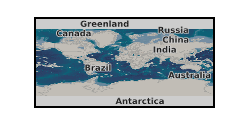
This is a collection of extracts from British newspapers describing earthquakes, mostly British. It contains original clippings, photocopies, and in a few cases manual transcriptions.
-
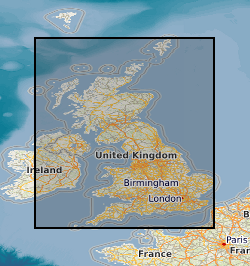
The Seismic Locations and Sections database (LOCSEC) stores digitised seismic reflection survey location and line-interpretation data. Supplementary data stored includes map projection information and rock-unit seismic velocity data. The data are grouped by interpretation project area. Location data are input from digitised seismic shotpoint (SP) or common depth point (CDP) maps, or from direct input of digital navigation data. [See: Original Seismic Shotpoint Location Maps (ORIGSPMAPS) and Digital Seismic Shotpoint Location Maps (DIGSPMAPS) datasets]. Line-interpretation data are input from digitised pick-lines on manually interpreted printed seismic sections. [See: Copy Seismic Sections dataset (COPYSEISECS)]. In-house software is used for data management and display, to perform interpretation related tasks, e.g. depth-conversion, and to merge data into X, Y, Z form for input to 3D mapping and modelling packages such as EarthVision. Data in LOCSEC may also be related to the borehole interpretations held in the Stratigraphic Surfaces Database (SSD). Almost all data are within the UK Onshore area; although there are some UK near-shore and offshore (North Sea, Irish Sea) and foreign data. Most data were acquired for commercial hydrocarbon exploration and subsequently provided to BGS for use on specific projects. Some data were acquired by BGS and other public-sector bodies, e.g. BIRPS, for academic research.
-

This dataset contains broadband seismic data collected between May 2018 and January 2019 as part of the Unsettled Earth project funded by the University of Bristol's Brigstow Institute. The seismic station was deployed in one of the turrets of the Wills Memorial Building Tower, Bristol.
-
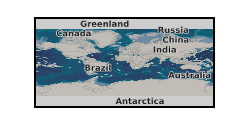
Recordings of earthquakes and other signals (such as quarry blasts, explosions, sonic booms and collapses) made by a network of seismometers and similar sensors across the UK. Recordings start in 1977 (with a few events recorded before this) and continue to the present day. Data is used for monitoring of seismic activity, studies of seismic hazard and scientific study of the Earth's interior. Data is freely available on request. Some data can be retrieved from the BGS AutoDRM (Automatic Data Request Manager) service. Time series data recorded by UK seismic networks.
-
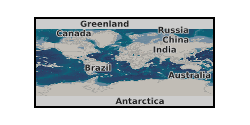
Dataset contains 3D synthetic seismic waveforms for axisymmetric global Earth velocity models. The waveforms were calculated using the finite difference approach with the PSVAxi algorithm (Jahnke, G et al., 2008. doi:10.1111/j.1365-246X.2008.03744.x). The Earthmodels are 1D and use PREM parameters except close to the core-mantle boundary (CMB) where 3D ultra-low velocity zones (ULVZs) are added to the PREM background model. ULVZ are thin layers of strongly reduced seismic velocities located at the CMB that have been observed in several regions of the Earth. The dataset models interaction of the seismic wavefield with ULVZ structure with varying elastic parameters (P-wave, S-wave velocity, density), location (location at source or receiver side along the great circle path), ULVZ length, shape (box, Gaussian, trapezoid) and height. Detailed description of the approach and the model space are given in Vanacore et al, (2016). Data format is SAC (Seismic Analysis Code). Vanacore, E.A., Rost, S., Thorne, M.S., 2016. Ultralow-velocity zone geometries resolved by multidimensional waveform modelling. Geophys. J. Int. 206, 659–674. doi:10.1093/gji/ggw114
-
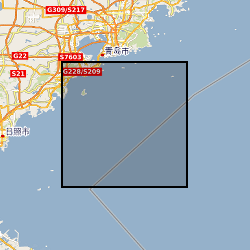
This catalogue contains the times, locations, families, and durations of earthquakes identified near Parkfield, California, USA. Collected over the period of 2020 – 2022. The methodology used to identify the earthquakes is described by Huang, H., Hawthorne, J.C. Linking the scaling of tremor and slow slip near Parkfield, CA. Nat Commun 13, 5826 (2022). https://doi.org/10.1038/s41467-022-33158-3. The data provided here are also provided in the supplement of that paper. This catalogue contains the times (columns 1-2), locations (columns 3-5: latitude, longitude, and depth), families (column 6), and durations (columns 7).
-

This repository contains data and inversion results for the SOLA finite-frequency tomography of the Pacific upper-mantle in a synthetic setup. It is related to the paper by Latallerie et al., 2025 in Seismica and more information can be found in this publication. The code repository for the finite-frequency SOLA tomography can be found at Gitlab: https://gitlab.com/FranckLatallerie/sola_ffsw.git The dataset consists of Rayleigh wave phase delays (dispersion) measured on vertical component seismograms for earthquake-receiver pairs across the Pacific hemisphere. Synthetic phase delays are measured on synthetic reference seismogram computed with normal-mode summation using the MINEOS software (e.g. Masters et al., 2011) in the radial reference model stw105 (Kustowski et al., 2008). “Observed” seismograms are synthetic waveforms computed in the 3D model S362ANI (Kustowski et al., 2008), using the SEM solver SPECFEM3DGlobe. These synthetic waveforms have been provided by the GlobalShakeMovie project (Tromp et al., 2010) and were downloaded from the Earthscope (formerly IRIS) Data Management Center (IRIS DMC, 2012) using the network code SY and channel code MXZ. All network and stations used are listed in the Acknowledgements of the accompanying paper. The model represents the vertically polarised shear wave velocity (Vsv) 3D structure of the upper mantle in the Pacific. It is accompanied with full 3D resolution and uncertainty. The 3D tomographic grid is made of voxels of size 2 by 2 degrees laterally, and 25 km vertically, spanning the whole sphere, starting at the surface down to ~400km depth. In the files, the longitude is the fastest varying coordinate, then latitude, followed by radius. The midpoints of the voxels range between 1 and 359 for longitude and between 89 (north) to -89 (south) for latitude, both in steps of 2 degrees, while radius changes from 6358.5 to 5983.5 km inclusive, in steps of 25 km.
-

This repository contains data and inversion results for the SOLA finite-frequency tomography of the Pacific upper-mantle. It is linked to the paper by Latallerie et al., in prep, which follows one from the synthetic tomography paper (Latallerie et al., 2025, Seismica), which both provide more information. The code repository for the finite-frequency SOLA tomography can be found at Gitlab: https://gitlab.com/FranckLatallerie/sola_ffsw.git The dataset consists of Rayleigh wave phase delays (dispersion) measured on vertical component seismograms for earthquake-receiver pairs across the Pacific hemisphere. Phase delays are measured using synthetic reference seismogram computed with normal-mode summation using the MINEOS software (e.g. Masters et al., 2011) in the radial reference model stw105 (Kustowski et al., 2008). Observed seismograms were downloaded from the Earthscope (formerly IRIS) Data Management Center (IRIS DMC, 2012). All network and stations used are listed in the Acknowledgements of the README file. The model represents the vertically polarised shear wave velocity (Vsv) 3D structure of the upper mantle in the Pacific. It is accompanied by full 3D resolution and uncertainty. The 3D tomographic grid is made of voxels of size 2 by 2 degrees laterally, and 25 km vertically, spanning the whole sphere, starting at the surface down to ~400km depth. In the files, the longitude is the fastest varying coordinate, then latitude, followed by radius. The midpoints of the voxels range between 1 and 359 for longitude and between 89 (north) to -89 (south) for latitude, both in steps of 2 degrees, while radius changes from 6358.5 to 5983.5 km inclusive, in steps of 25 km.
 NERC Data Catalogue Service
NERC Data Catalogue Service